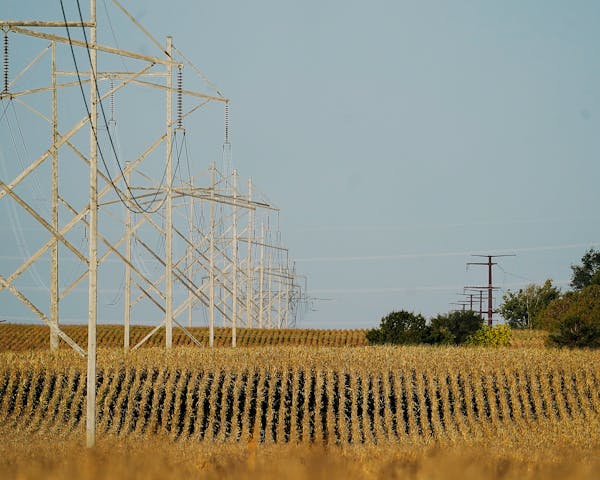Otter Tail Power has reversed its decision to exit a large North Dakota coal-fired power plant, citing new risks in the Midwest's electricity market.
In 2021, Fergus Falls, Minn.-based Otter Tail announced it would sell its partial stake in the Coyote Station Power Plant and exit its agreements there by 2028. At the time, Otter Tail said the plant in Beulah, N.D., had become too costly for customers and would no longer be needed as the utility adds more renewable energy.
While Otter Tail is continuing to add renewables, the company now says it still needs Coyote Station.
"What has changed are the uncertainties and risks our customers now face," Otter Tail said in a recent filing with the Minnesota Public Utilities Commission (PUC).
Nate Jensen, Otter Tail's manager of resource planning, said in an interview that the utility is taking "a cautious pause. We don't want to do anything that can't be undone that we would regret."
Clean energy and environmental groups had praised the plan to exit Coyote Station, noting that it is one of the "dirtiest coal-fired plants in the country." They will fight the company's new proposal before the PUC.
"It is obviously disturbing that they are willing to remain dependent on this highly polluting coal plant," said Barbara Freese, staff attorney for the Minnesota Center for Environmental Advocacy.
Coyote Station is by far the largest emitter of nitrogen oxides and sulfur dioxide of any coal plant in Minnesota and North Dakota, Freese said, citing federal data. The plant also is a major source of carbon dioxide, and "climate change isn't going away," she added.
Otter Tail is a small, investor-owned utility based in Fergus Falls that serves about 137,000 homes and businesses in western Minnesota, North Dakota and South Dakota. About half of its customers are in Minnesota.
Otter Tail operates and co-owns the Coyote Station as well as another coal-fired plant in Big Stone, S.D., with three other utilities. It owns the largest stake in Coyote, at 35%, and had planned to sell its stake in the operation, which is expected to run until at least 2041.
Since Otter Tail announced it would exit Coyote Station, the utility has added new large power customers, increasing its need for generation capacity, the company said in the PUC filing.
Specifically, Otter Tail signed a deal with a cryptocurrency operation in Jamestown, N.D., which immediately became its second-largest customer.
The company said its decision to stick with Coyote Station is rooted in changes in the regional energy market run by the Midcontinent Independent System Operator (MISO). MISO operates the power grid and wholesale electricity markets in 15 states, including Minnesota and parts of the Dakotas.
Historically, MISO has held an annual auction each spring to sell power generation capacity. Minnesota utilities are usually sellers, while buyers are power companies outside of the Upper Midwest that are short of power.
Last year's auction sent shockwaves through the Midwest electricity world.
Electricity auction prices — outside of MISO's Deep South region — soared to $237 a megawatt per day, up from only $5 in 2021. Essentially, the Midwest faced a potential power shortage during 2022's peak summer demand, and MISO issued a rare warning of rolling blackouts (though they did not materialize).
MISO said the potential power squeeze was partly rooted in the many coal plant shutdowns throughout its region, which have drawn down power generation capacity faster than it can be replaced by renewables.
For 2023, MISO has adopted a new auction system in which electricity capacity would be sold seasonally — four times a year — rather than once a year based on peak summer demand.
Under MISO's plan, the reserve power capacity that utilities must have would rise significantly in winter and spring. Otter Tail has its peak demand in winter; the utility has proportionally more electric heat customers than other Minnesota power companies.
"As a winter-peaking utility, we are particularly concerned about MISO's new seasonal reserve margin requirements," Otter Tail said in a PUC filing. The company also said it is concerned about projections of continued power capacity deficits in MISO like the one forecast in 2022.
Jensen also said volatility in natural gas markets contributed to Otter Tail's decision to stick with Coyote Station.
For many years, gas prices were cheap and stable. But they have been volatile and rising the past two years due to a variety of factors.
Gas-power plants emit half as much CO2 as coal generators — and electricity providers have switched from coal to gas in droves in recent decades. Coyote Station gets its fuel from an adjacent lignite coal mine, and prices are low and stable, Jensen said.
"We are not willing to give up that hedge just yet," he said.
Otter Tail's plan to stick with Coyote Station comes with a significant caveat: If the plant is faced with a large "non-routine" capital investment, the utility would exit. "We are also not willing to put $100 million into a coal plant right now."
A non-routine capital investment would likely include big-ticket items to limit non-CO2 emissions from Coyote Station.
The North Dakota Department of Environmental Quality last year determined that Coyote Station didn't need to take additional emission reduction measures to comply with federal "regional haze" pollution rules.
However, the U.S. Environmental Protection Agency may not accept North Dakota's approach, Otter Tail said in a PUC filing.
The owners of Coyote Station "have not put in modern pollution controls like other coal plants have," Freese said.
